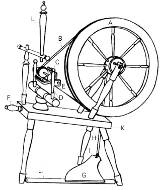
10

How to best implement an iterator
source link: https://yourbasic.org/golang/iterator-generator-pattern/
Go to the source link to view the article. You can view the picture content, updated content and better typesetting reading experience. If the link is broken, please click the button below to view the snapshot at that time.
How to best implement an iterator
yourbasic.org/golang

Go has a built-in range loop for iterating over slices, arrays, strings, maps and channels. See 4 basic range loop (for-each) patterns.
To iterate over other types of data, an iterator function with callbacks is a clean and fairly efficient abstraction.
Basic iterator pattern
// Iterate calls the f function with n = 1, 2, and 3.
func Iterate(f func(n int)) {
for i := 1; i <= 3; i++ {
f(i)
}
}In use:
Iterate(func(n int) { fmt.Println(n) })1
2
3Iterator with break
// Iterate calls the f function with n = 1, 2, and 3.
// If f returns true, Iterate returns immediately
// skipping any remaining values.
func Iterate(f func(n int) (skip bool)) {
for i := 1; i <= 3; i++ {
if f(i) {
return
}
}
}In use:
Iterate(func(n int) (skip bool) {
fmt.Println(n)
return n == 2
})1
2More code examples
Go blueprints: code for common tasks is a collection of handy code examples.
Share:
Recommend
About Joyk
Aggregate valuable and interesting links.
Joyk means Joy of geeK